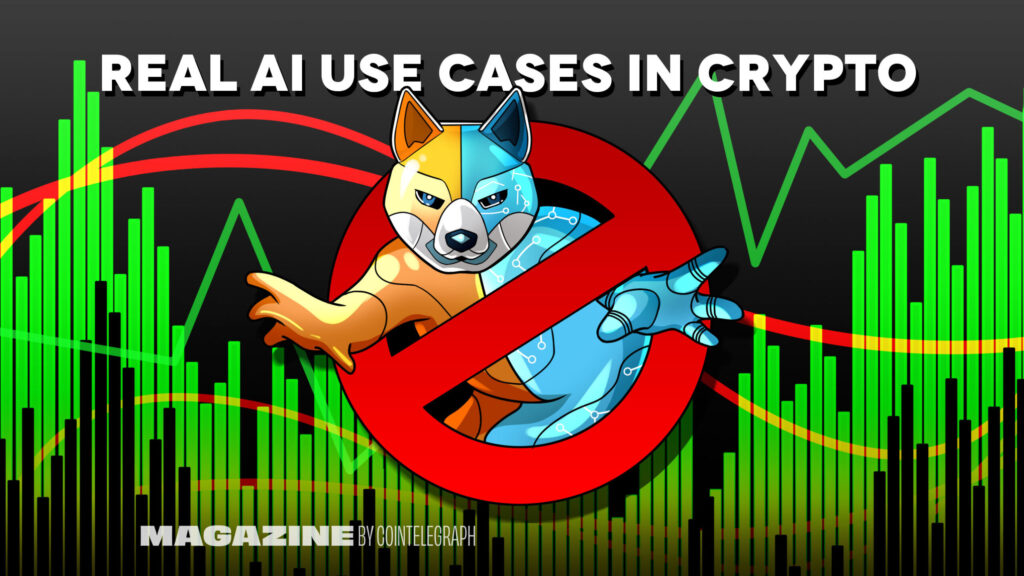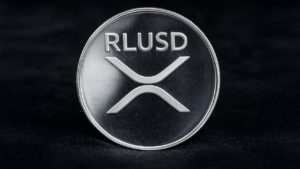Crypto-based AI markets, and AI financial analysis – Cointelegraph Magazine
1 year ago CryptoExpert
We’re rolling out genuine use cases for AI and crypto each day this week — including reasons why you shouldn’t necessarily believe the hype. Today get two for the price of one: Blockchain based AI marketplaces, and financial analysis.
It may not seem like the most exciting use case blending AI and crypto, but both Near co-founder Illia Polosukhin and Framework Ventures founder Vance Spencer cite blockchain-based marketplaces that source data and compute for AI as their top pick.
AI is an incredibly fast-growing industry requiring ever-increasing amounts of computing power. Microsoft alone is reportedly investing $50 billion into data center infrastructure in 2024 just to handle demand. AI also needs enormous amounts of raw data and training data, labeled into categories by humans.
Polosukhin believes decentralized blockchain-based marketplaces are the ideal solution to help crowdsource the required hardware and data.
“You can use [blockchain] to build more effective marketplaces that are more equal,” he tells Magazine, explaining that AI projects currently need to negotiate with one or two big cloud providers like Amazon Web Services. Still, it’s difficult to access the required capacity due to a shortage of Nvidia’s A100 graphical processing units.
Spencer also cites blockchain-based marketplaces for AI resources as his current number one use case.
“The first one is sourcing actual GPU chips,” he says. “Where there’s a big shortage of GPU chips, how do you source them [without] actually having a network that sources and provides and bootstraps a market?”
Spencer highlights Akash Network, which offers a decentralized computing resources marketplace on Cosmos, and Render Network, which offers distributed GPU rendering.
“There are some pretty successful companies that actually do it at this point that are protocols.”
Another example of a decentralized marketplace offering cloud computing for AI is Aleph.im. Token holders in the project are able to access computing and storage resources to run projects.
Libertai.io, a decentralized large language model (LLM) is being run on Aleph.im. While you might think decentralization would slow an AI down to the point where it’s unable to function, Aleph.im founder Moshe Malawach explains that’s not the case:
“This is the thing: for one user the whole inference (when you generate data using a model) is running on a single computer. The decentralization comes from the fact that you get on random computers on the network. But then, it’s centralized for the time of your request. So it can be fast.”
Another blockchain-powered AI marketplace is SingularityNET, which offers various AI services — from image generation to colorizing old pictures — that users can plug into models or websites.
Read also
Features
You don’t need to be angry about NFTs
Features
Crypto is changing how humanitarian agencies deliver aid and services
An emerging blockchain based AI marketplace that Spencer is super excited about is tokenizing and trading AI models. Framework has invested in the Super Smash Brothers-like fighting game AI Arena, where users train AI models that battle each other. The models are tokenized as nonfungible tokens and can be bought, sold or rented. “I think that’s really cool,” he says. “It’s interesting having the crypto native monetization, but also ownership of these models.”
“I think one day, probably some of the most valuable models — some of the most valuable assets on-chain — will be tokenized AI models. That’s my theory, at least.”
Don’t believe the hype: You can currently source components, data and compute via traditional Web2 marketplaces.
Bonus use case: Financial analysis
Anyone who has tried to interpret the ocean of data produced by on-chain financial transactions knows that although it’s one thing to have an immutable and transparent record, it’s quite another to be able to analyze and understand it.
AI analytics tools are perfectly suited to summarizing and interpreting patterns, trends and anomalies in the data, and they can potentially suggest strategies and insights for market participants.
For example, Mastercard’s CipherTrace Armada platform recently partnered with AI firm Feedzai to use the technology to analyze, detect and block fraudulent or money laundering-related crypto transactions across 6,000 exchanges.
Elsewhere, GNY.io’s machine learning tool attempts to forecast volatility of the top 12 cryptocurrencies and its Range Report uses ChatGPT-4 to analyse trends and buy/sell signals.

But can AI help with traditional markets, too? That’s the hope of Bridgewater, which will launch a fund next year from its new Artificial Investment Associate (AIA) Lab that aims to analyse patterns in financial markets so it can make predictions for investors to capitalize on.
Previous attempts to do this have produced lacklustre results — with a Eurekahedge index of a dozen AI driven funds underperforming the its broader hedge fund index by around 14 percentage points in the five years until 2022.
This is mainly due to the issues involved with feeding in the large amounts of accurate information required.
Ralf Kubli, a board member with the Casper Association, believes AI can revolutionize traditional finance — but only if it combines blockchain records with rigorous standards to ensure the information fed to the models is comprehensive and accurate.
For years, he’s been advocating for the finance industry to adopt the Algorithmic Contract Types Universal Standards, or ACTUS, created in the wake of the Global Financial Crisis, which was partly caused by complicated derivatives where no one understood the liabilities or cash flows involved. He believes on-chain standardized data will be essential to ensure trust and transparency in model outputs.
Read also
Features
5 years of the ‘Top 10 Cryptos’ experiment and the lessons learned
Features
Risky business: Celsius crisis and the hated accredited investor laws
“Fundamentally, we believe that without blockchain, AI will be quite lost,” he tells Magazine. “Imagine you’re going to invest in an AI company, and you’re updated every three months about the progress of their LLMs, right? If you cannot verify what they fed into the model, you have no way of knowing whether they are making any progress.”
He explains blockchain guards against companies fudging their results, “and the past would indicate that […] there’s so much money, they will fudge about what’s going on.”
“AI, without this assurance layer of the blockchain — what happened, when, where, what was used — I think will not be effective going forward.”
He says that combining the two will give rise to new predictive abilities.
“The hope for AI for me going forward is that the prediction models become much more powerful and behavior can be much better predicted,” he says, pointing to credit scores as an example.
“AI used in the right way could potentially lead to much more powerful prediction models, which would mean that certain people who currently cannot get credit — but would be creditworthy — can obtain credit. That’s something I’m very passionate about.”
Don’t believe the hype: AI’s predictive abilities have been shown to be poor at best so far, and trusted and reliable data that’s not recorded on blockchain can be useful input for AI analysis.
Also read:
Real AI use cases in crypto, No. 1: The best money for AI is crypto
Real AI use cases in crypto, No. 2: AIs can run DAOs
Real AI use cases in crypto, No. 3: Smart contract audits & cybersecurity
Real AI & crypto use cases, No. 4: Fighting AI fakes with blockchain
Subscribe
The most engaging reads in blockchain. Delivered once a
week.


Andrew Fenton
Based in Melbourne, Andrew Fenton is a journalist and editor covering cryptocurrency and blockchain. He has worked as a national entertainment writer for News Corp Australia, on SA Weekend as a film journalist, and at The Melbourne Weekly.













